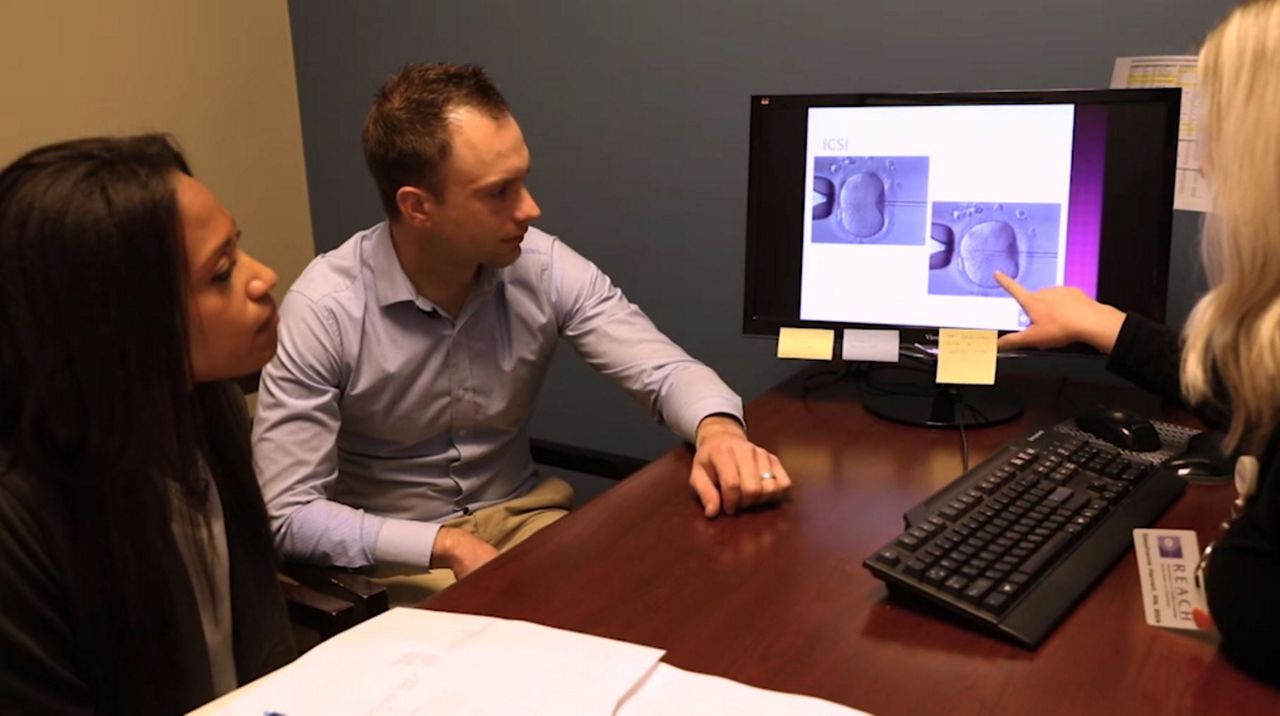Infertility is considered a disease by a growing number of experts and organizations. It is an umbrella term for a number of conditions that impact the reproductive system in men and women. Historically, infertility has been defined as a couple’s inability to get pregnant after a year of trying, or after six months of trying if the woman is over the age of 35.
Infertility is also a potential risk factor of other diseases – like uterine fibroids, obesity and even sexually transmitted diseases contracted in a patient’s history. One in five cases of infertility is unexplained – for now. The other 80 percent of infertility cases could be due to one or more of the following reproductive disorders.
PROBLEMS WITH OVULATION
This is the leading underlying cause of infertility among women. There are several conditions that result in a woman being unable to produce an egg, or that prevent the egg from traveling to the womb. These issues affect a third of women dealing with infertility. Conditions in this category include:
PCOS: Among women, one of the most common causes of infertility is polycystic ovary syndrome. It affects as many as 5 million in the U.S. who are of reproductive age. With PCOS, a woman is producing more male hormones than normal. This can lead to cysts growing in the ovaries, impacting the release of eggs and the regularity of the menstrual cycle. Other symptoms include:
· Excessive weight gain and difficulty keeping the weight off, abnormal hair growth – on the face, chest, stomach, thumbs and/ or toes
· Thinning or balding hair
· Acne, oily skin, or dandruff
· Pelvic pain
Age is a major risk factor for ovulation problems. At 20 weeks a female fetus has six to seven million egg cells. That number drops to about one to two million after a baby girl is born. At puberty there are between 300,000 and 500,000 egg cells. By the time a woman is 37, there are about 25,000 egg cells. Between 32 and 37 years of age, not only are women losing egg cells, but hormonal changes impact the quality of the cells. So a healthy 30 year old woman with no reproductive conditions has a 20 percent chance of getting pregnant any given month. A healthy 40 year old woman has a five percent chance of getting pregnant each month.
· More on female age-related fertility decline from the American College of Obstetricians and Gynecologists and ReroductiveFacts.org
POI is known as either primary or premature ovarian insufficiency, is when the ovaries stop working normally before the age of 40. It used to be called “premature menopause” or “premature ovarian failure” but experts say this is inaccurate because up to 10 percent of women with POI can still get pregnant and deliver healthy babies. POI is quite rare, impacting about one percent of women in childbearing age. But POI is found in as much as 28 percent of women who experience missed or irregular periods. There are many different factors that can lead to women having this disorder:
· Genetic or chromosomal abnormalities
· Damage from chemotherapy or radiation therapy
· Endocrine disorders – problems with hormonal regulation
Eating disorders, obesity and overexercising can also impact ovulation.
STRUCTURAL PROBLEMS
Structural problems within the female reproductive system can also cause infertility, but are less common. An abnormally shaped uterus, blocked fallopian tubes, fibroids, STDs and scar tissue from previous surgeries can prevent pregnancy or lead to miscarriages.
Endometriosis is one of the more common conditions impacting the functionality of a woman’s reproductive system. Forty percent of women with infertility have endometriosis. One in 10 women of reproductive age has the condition, where the uterine lining, known as the endometrium, grows outside of the uterus. During menstruation, bleeding occurs not only inside the uterus, but wherever the endometrium has landed, causing scarring. Inflammation from the dysfunctional growth of endometrium can damage the sperm, egg or interfere with movement through the fallopian tubes and uterus. Symptoms include:
· Chronic pelvic pain before and during periods
· Pain during sex
· Depending on where the endometriosis lands, pain during bowel movements and urination
· Heavy periods (i.e. more than four “super” tampons are needed daily)
· Some women with endometriosis don’t have symptoms
The only way to diagnose endometriosis is through a laparoscopic exam, an invasive procedure. But scientists are working on other ways to screen for the condition. There are treatments and procedures available to help alleviate pain. More on endometriosis.
MALE INFERTILITY
Male infertility is often overlooked, but is responsible for about 20 percent of couples’ inability to get pregnant. A combination of male and female infertility issues contributes to another 30 to 40 percent of couples’ who cannot conceive. In 50 percent of men with infertility the cause is undetermined.
Azoospermia is when a man does not produce sperm. This affects 15 percent of men who have infertility. It can be caused by a hormone imbalance or a blockage of sperm movement. Some men may not have the necessary ducts within their reproductive organs to allow sperm to move freely.
Oligospermia is when a man produces less sperm than normal, also called low sperm count. This can be caused by enlarged veins in the testicle called a varicocele, and accounts for about 40 percent of men with fertility problems.
There are several conditions that can lead to abnormally shaped sperm, low sperm count or may affect how the sperm move around. Inability to transport sperm from the testes to the penis is the issue in up to 20 percent of male infertility cases.
More on medical conditions that lead to infertility: https://resolve.org/infertility-101/medical-conditions/



